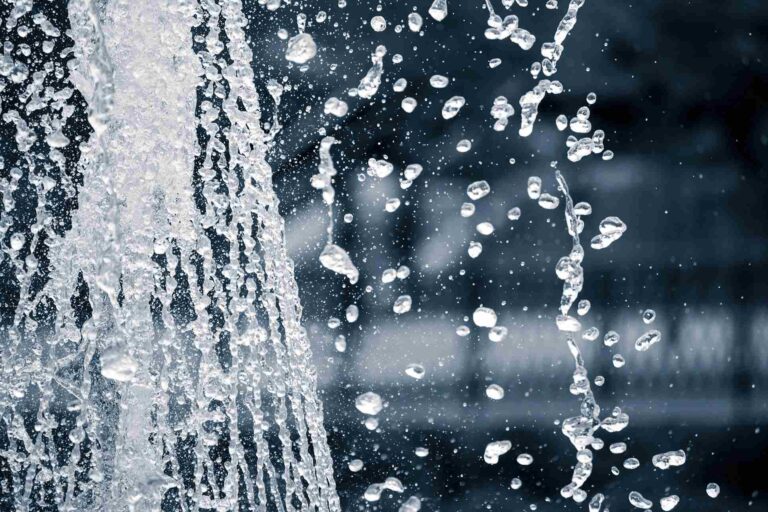Water consumption is an essential component of our daily lives, necessary for basic human needs such as drinking, hygiene, and sanitation. However, water is also vital for agricultural and industrial purposes, making it a valuable resource for the global economy.
Unfortunately, with a growing global population and changing climate patterns, water scarcity has become an increasingly pressing issue in many regions worldwide.
In this article, we will explore the top five countries with the highest water consumption rates. We will examine the reasons for their high consumption rates and the impact on their environments and economies. Ultimately, this discussion highlights the critical need for effective water management and conservation practices to ensure sustainable access to this vital resource for future generations.
Table of Contents
The 5 countries consuming more water globally
The following are the countries with the highest rates of water consumption:
1. China
China is the world’s most populous country, with over 1.4 billion people. It is no surprise that China consumes a massive amount of water. The estimated annual consumption is 362 billion cubic meters. China’s high water consumption rate can be attributed to several factors, including rapid urbanization, a booming manufacturing sector, and agricultural production.
China’s rapid urbanization has increased the demand for water for domestic and industrial use. In addition, the country’s manufacturing sector, which is a significant contributor to the global economy, requires vast amounts of water for production processes.
The Chinese government has implemented several initiatives to promote water conservation and management to address these issues.
2. USA
The United States is the world’s third-largest country by population, and its water consumption rate is among the highest globally. The country consumes an estimated 216 billion cubic meters of water annually.
The high water consumption rate in the United States is due to several factors, including its large population, high standard of living, and significant agricultural and industrial production.
The United States has one of the world’s highest per capita water consumption rates. This is primarily due to the high standard of living and the widespread use of water-intensive appliances and systems, such as automatic irrigation systems and swimming pools. The high water consumption rate in the United States has led to several environmental and economic consequences.
The United States has implemented several initiatives to promote water conservation and management to address these issues. This includes water pricing policies that encourage conservation and investments in water-efficient technologies. However, continued efforts are necessary to ensure sustainable access to water for future generations.
3. India
India is the world’s second-most populous country, with over 1.3 billion people. The country’s water consumption rate is around 761 billion cubic meters annually, making it one of the largest water consumers globally. India’s high water consumption rate is due to several factors, including agriculture, industry, and domestic use.
Agriculture is India’s primary water consumer, with an estimated 80% of total water consumption used for irrigation. Additionally, India’s booming manufacturing sector and rapid urbanization have increased the demand for water for industrial and domestic use.
Furthermore, the country’s growing population and changing climate patterns have intensified water scarcity issues, particularly in regions heavily relying on monsoon rains.
India’s high water consumption rate has led to several environmental and economic consequences. Many regions experience severe droughts and contamination of water sources. To address these issues, the Indian government has implemented several initiatives to promote water conservation and management. These initiatives include rainwater harvesting, groundwater recharge programs, and the promotion of water-efficient technologies in agriculture and industry.
4. Russia
Russia is the world’s largest country by land area. Its water consumption rate is around 71 billion cubic meters annually. The country’s water consumption is primarily driven by its significant agricultural and industrial sectors, which account for most of its water usage.
Agriculture is the primary consumer of water in Russia, with irrigation accounting for around 65% of total water usage. The country’s industrial sector, including oil and gas production, manufacturing, and mining, also requires vast amounts of water for production processes and cooling.
The high water consumption rate in Russia has led to several environmental and economic consequences. Water scarcity is a growing issue in many regions, particularly in the arid regions of southern Russia.
The Russian government has implemented several initiatives to promote water conservation and management to address these issues. These initiatives include investments in water-efficient technologies, and developing water recycling and reuse systems. In addition to establishing water pricing policies that encourage conservation. However, more efforts are needed to ensure sustainable water use and management in Russia.
5. Brazil
Brazil is the world’s fifth-largest country by land area and population, with a water consumption rate estimated at around 820 billion cubic meters annually. The agricultural sector drives the country’s high water consumption rate, accounting for over 70% of total water usage.
Most of Brazil’s agricultural water consumption is used for irrigating crops, with sugarcane, soybeans, and coffee being the most water-intensive crops. Additionally, Brazil’s industrial sector, including mining, manufacturing, and energy production, also requires significant amounts of water.
Global water consumption rates highlight the need for effective water management
The high water consumption rates of the countries above highlight the critical need for effective water management and conservation practices. Water demand is primarily driven by agriculture, industry, and domestic use, with significant environmental and economic consequences.
Water scarcity and pollution are significant issues that threaten the sustainability of water resources in many regions globally.
Governments, industries, and individuals all have a role in promoting sustainable water use practices, protecting water sources and ecosystems, and reducing water waste.
By working together to implement effective water management and conservation practices, we can ensure that future generations can access safe and sufficient water resources.
Read also: World Water Day 2023, UN warns: unsustainable use, risk of global water crisis












